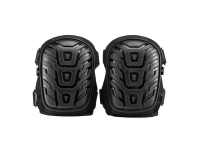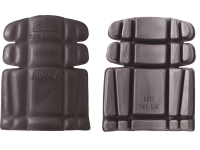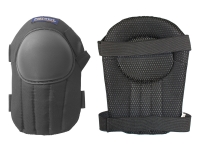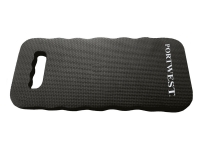Protective Work Knee Pads
Browse Our Selection of Knee Saving Pads
Additional Information
When you have to get a job done that requires you to be on your knees for a long period of time, you are more than aware of the discomfort and inability to move around with ease by the time that you are done. Our Knee pads can help eliminate the pain and make you more effiecient while also keeping your body healthy. It is important to find a pair of knee pads that are designed properly in order to protect your knees and other joints. Good Knee protectors will potentially prevent you from falling or other hard impact injuries that can occur.
When buying knee pads online it can sometimes seem daunting what with all the different types and styles but we the best knee pad decision tool for you.
What to Consider When You Buy Knee Pads
When choosing the best knee pads, consider which qualities are essential for your project. You want to gauge the right combination of comfort and function, the level of protection needed, and your project’s duration.
While the choices can seem daunting, choosing the best knee pads for you doesn’t need to be complicated when you narrow down the main types noted above. Consider the following ideas to select the best knee pads, because you want to enjoy your project, not merely survive it.
Fit
It is important to choose knee pads that fit correctly. If your knee pads are too small, they may restrict your movement and become uncomfortable. If the pads are too big, they may slip and not protect you. You can choose the best fit when you consider the essential elements of your job. If so, you will likely want adjustable straps. To choose the best knee pads, try them on and mimic the movements you plan to make when you wear them. If you’re not able to try on the knee pads before purchasing them, consult the manufacturer’s measurement guides to determine the best fit.
Cushioning Material
Knee pads are available with various cushioning materials. The most common of which are gel, foam, or rubber. Sport-related activities require impact-resistant padding to prevent injury during falls, while around-the-house projects and some workplace activities warrant padding designed to protect knees when you kneel for long periods.
Thickness of Padding
The thickness, or density, of the pads influences their protective elements and affects mobility. Thicker padding offers comfort during longer durations of kneeling. While roofing professionals and ardent gardeners spend most of their days kneeling, they still need the comfort of thick padding that doesn’t restrict movement. You’ll need to determine if a product that combines thick padding with unlimited mobility on the ground is a priority. If your projects include flooring installation, automotive work, or other work that requires up and down movements, be sure to take that into account.
Adjustable Straps
Not all knee pads are equipped with adjustable straps, because they may not be necessary. Adjustable straps are handy when you wear the pads over different clothing, such as shorts one day and long pants the next. If you plan to frequently kneel and stand up when you wear the knee pads, adjustable straps allow you to tighten them as needed. Many models are designed with straps that are located both above and below the knee.
Straps on knee pads are commonly made from Velcro or elastic, although some straps are plastic or metal fasteners. Velcro increases the range of adjustability but can sometimes be cumbersome to fasten and uncomfortable. Elastic straps offer comfort if you correctly adjust them. Still, elastic stretches over time, so they may need early or frequent replacement. Fasteners provide both fit and longevity but may scratch surfaces or become hot.
Cooling vs. Heating Properties
The knee pad’s material determines if they are best suited for cooler or warmer temperatures. Neoprene soft cap knee pads provide breathability, but thick padding layers act as thermal insulators on cold day





